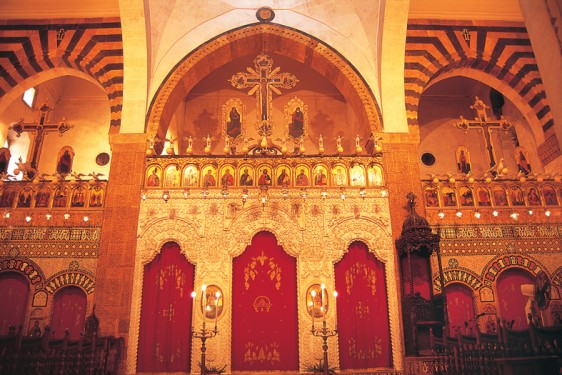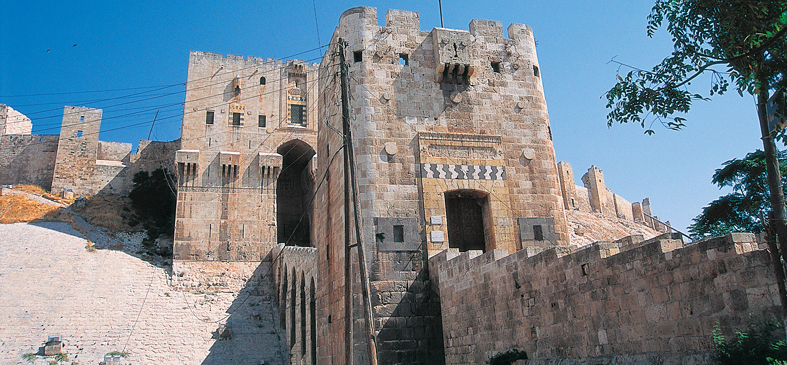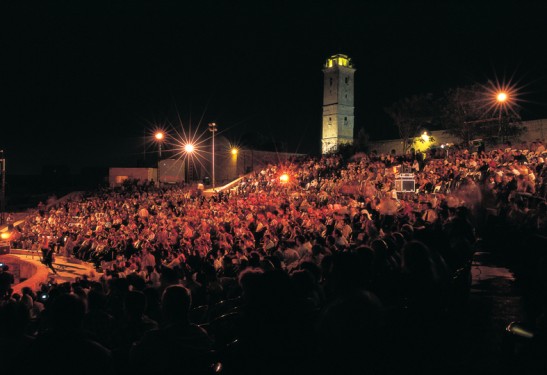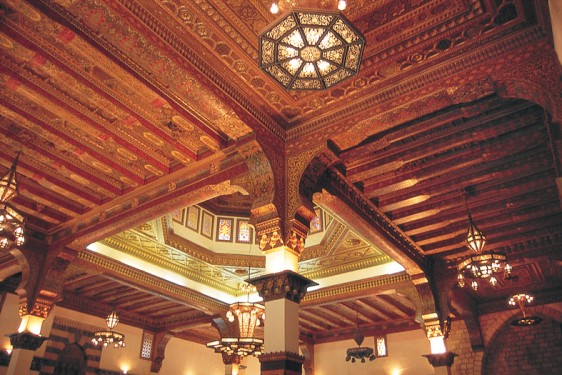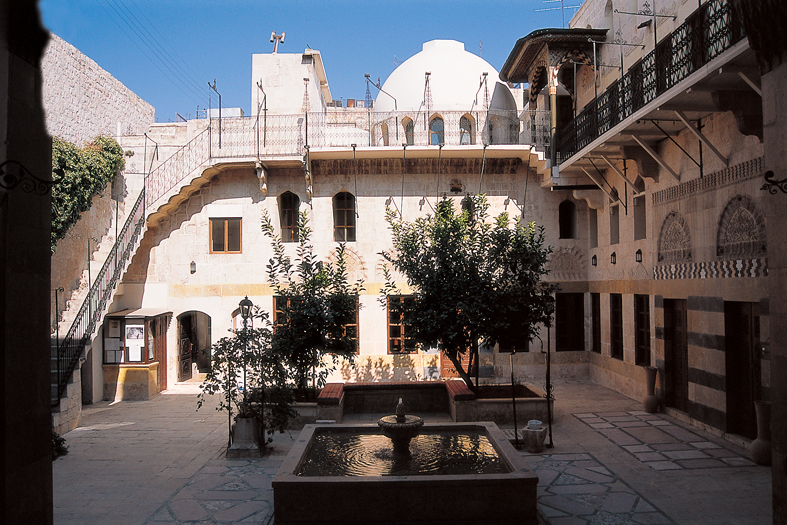Prestige issue 126, November 2003
Report by Bassam Lahoud
Its beauty was sung by Al-Mutanabbi and Lawrence of Arabia. Testimony of so many civilizations, melting pot of culture, city of pluralism and openness. Delicious stop on the Silk Road, Antique Aleppo, city of gardens which offered its fountains to thirsty travelers, welcomed the world to the festival that paid homage to its traditions, its heritage, the multi-talented artisans.
Main entrance of the citadel. © Prestige / Bassam Lahoud
Privileged place of encounter and dialogue, art and culture, Aleppo, one of the oldest cities in the world, has hosted for centuries peoples of East and West. The Festival of the Silk Road passes this spirit of hospitality. It was attended by Italy, France, Japan, Turkey, Egypt, Lebanon … through colorful shows: traditional costumes, painting, music, dance, theater whose high point was the setting scene of the signing of the Treaty between the Republic of Venice and the Kingdom of Aleppo in 1207.
The amphitheater can host more than 2,500 spectators. Located at the Millennium citadel, one of the oldest and largest in the world. © Prestige / Bassam Lahoud
The imposing silhouette of the citadel marks the landscape of Aleppo, a city in northern Syria, which has witnessed several civilizations: Sumerian, Akkadian, ammorites, Canaanite, Hittite, Aramaic, Persian, Macedonian, Roman, Byzantine, Seljuk.
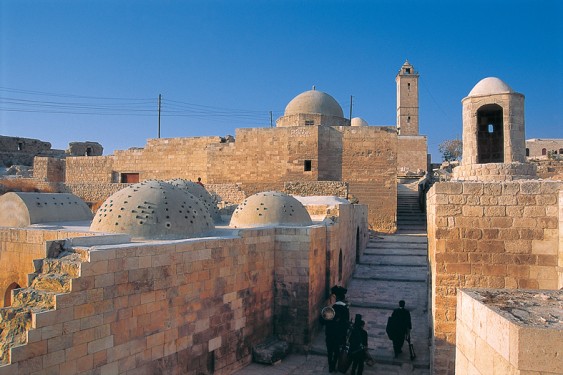
The remains of the Citadel of Aleppo revealed that civilizations have succeeded for nearly five thousand years! Restored at the time of the Mamluks, its simple beauty reflects a unique architectural mastery. A moat made it inaccessible to the grasp of the envious. The citadel, considered one of the largest in the world, included the Royal Palace, the Throne Room, steam room, which was an integral part of the life of the city. Some Aleppo hammams have more than eight hundred years.
Chiseled woodwork enhances the ceilings of the Palace of the Citadel. © Prestige / Bassam Lahoud
No Conqueror was able to invade by force the Aleppo Citadel
The textile craft in Aleppo dates back to the third millennium BC. Aleppo fabrics were famous worldwide. The Pharaohs mainly loved these crafts as unveiled by the ancient Egyptian frescoes. Over the centuries, the West, including Lyon, the city of weavers, went for supplies in Aleppo. Popular, silks and … carpets of excellent craftsmanship. Proof is this precious piece, the Victoria & Albert Museum in London is proud of: a Syrian carpet.
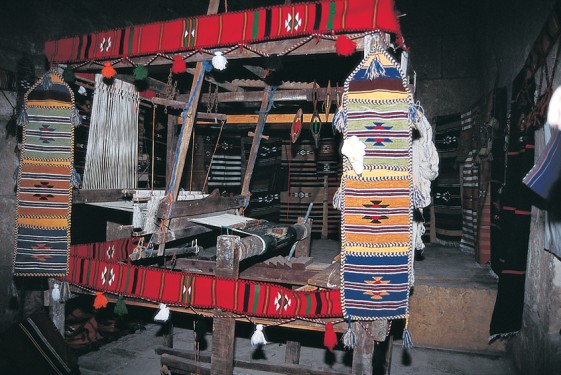
The Arabs have excelled in sciences, especially medicine. They established laboratories, mobile clinics and hospitals. Masterpiece of Islamic architecture, the Bimaristan Argun was built by the Vice-sultan of Aleppo Argun el Kamili. Four secluded lodges, a patio and a fountain, several rooms and Iwan. The mentally ill were distracted by reading them stories, and they were treated by light, water, flowers, fresh air, music …
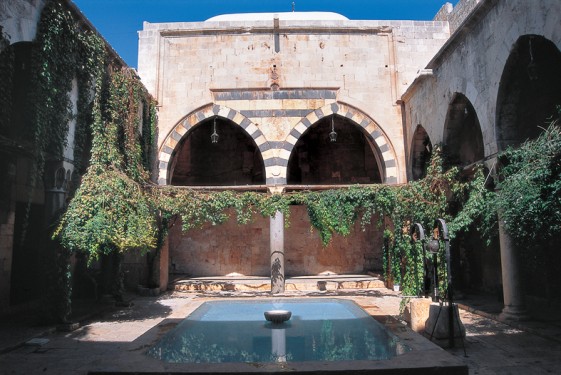
Some five hundred mosques rise into the sky of Aleppo. The most majestic is the great Umayyad mosque, converted in the XIVth century during the reign of Caliph Sultan bin Abdel Malak. Square minaret typical of the era, carved ebony pulpit inlaid with ivory, mihrab in ocher stone accented with moucarnassat (stalactites patterns), and columns with Corinthian capitals, remains of the church that Helena, mother of the Emperor Constantine had built on this site.
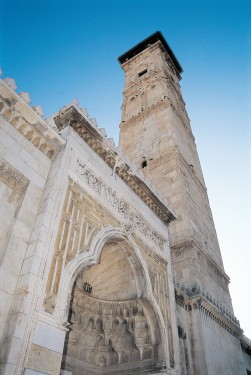
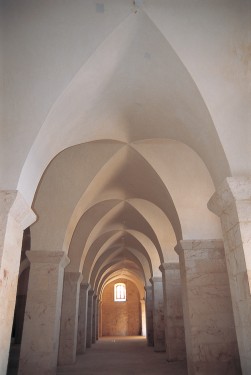
Aleppo houses are the best expression of the architectural heritage of the city. Discrete gates under finely carved arabesque arches overlooking a patio full of freshness, with beautiful marble games reflecting the ellipse water. Baroque and Rococo art set the tone on white limestone facades. The urban fabric is unique, The XVIth century souks have preserved their traditional character, numerous khans with arcade entrances, richly decorated facades are considered true open popular museums and make the Old City of Aleppo among the most beautiful cities of the Middle East.

The Saint Basile Institute, of the Greek Catholic Archbishop, a haven of peace and serenity
The Court of St. Basil Institute, today dedicated to tourism studies. © Prestige / Bassam Lahoud
Aleppo has always cultivated tolerance. Simeon the Stylite had settled in the neighborhood of Aleppo. The city even had its bishop, one of the first of Christianity, before the Council of Nicea. A Western traveler noted that the city had more than 70 churches. Isn’t it also in Aleppo, that the Greek Orthodox Patriarch Athanassios Debbas installed the first printing house of the East?
